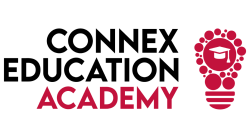Mathematics is an emotional word. For some people it conjures up images of sitting in rows, trying to find answers to pages of ‘sums’ and an overwhelming sense of failure. For other people it is a thing of beauty, something we use everyday and which we are all amazing at. You might like to ponder which emotion resonates with you, but while you do, let me tell you that everyone is fantastic at mathematics – it’s just that some people don’t’ think they are!
A huge part of mathematics is about playing with numbers. We call this number sense. We all have number sense, but sometimes we can forget about it or think we have ‘lost’ it. Number sense is about having a feel for numbers. It is about spotting patterns and making connections. It is not about figuring out the answer quickly. In fact, number sense is less about the answer and more about understanding what we are doing and why it works.
Classroom practice
Just imagine a classroom filled with learners who are curious about numbers, who love to solve problems in more than one way, who are encouraged to discuss the problem with their peers and swap what they have noticed or what they are wondering about. These learners love a problem that they cannot yet solve. They know they can use facts that they know to work out questions they haven’t yet solved. One of the reasons they exhibit these mathematical characteristics is that they know mathematics isn’t about being right or wrong, it is about making sense of numbers. Eventually we might discuss the answer (in fact I often give learners a question and the answer at the same time to avoid any anxiety around finding the answer), but first we stop, pause and think; What do we notice? What could we try first? and what does my friend think?
As teachers we can’t always insist our learners love mathematics, or feel confident with it, but we can set tasks that enable them to develop their number sense. Here are four tips that will help you to develop number sense with your learners:
1. Manipulatives
Use manipulatives to expose the structure of mathematics. Manipulatives (physical objects) such as bead strings, ten frames and counters are essential for revealing the structure of mathematics. For example, using counters in an array to show what 4 x 5 looks like helps us to teach that multiplication is additive (we could use a different manipulative to show that multiplication is also multiplicative).
2. Design tasks for learners to work on
Design tasks which enable learners to solve them in different ways. One of my mantra’s is ‘one problem, five different ways’. Open ended tasks allow learners to think. If a question is closed (e.g. what is the answer to 3 + 7?), there is limited room for thinking, but if we ask what two numbers could be added together to sum to 10, we have opened up possibilities, and also invited learners to think how they might approach this question.
3. The equals symbol =
The equals symbol means balance, not ‘here comes the answer’. Too often questions are presented with the equals sign towards the end of the question (e.g. 3 + 4 = ?). This gives a false impression that it is the signal to work out the answer. But learners need to understand that the quantity on either side of the equals symbol need to balance. So, it doesn’t matter where the equals symbol appears (e.g. 10 = 4 + ?).
4. Fact finder
If you know one fact, you know lots more! This is often a surprise to learners, but once we show them how facts connect to each other, they realise they actually know a lot more than they thought they did! For example, if you know that 4 x 5 = 20, you also know that 5 x 4 = 20, or 20 ÷ 4 = 5 and so on.
Alison Borthwick is a consultant, guest author and writer for Thirsty Scholars Partnership. Alison has written our recently launched course: Primary Maths: Developing Number Sense with your Learners.

